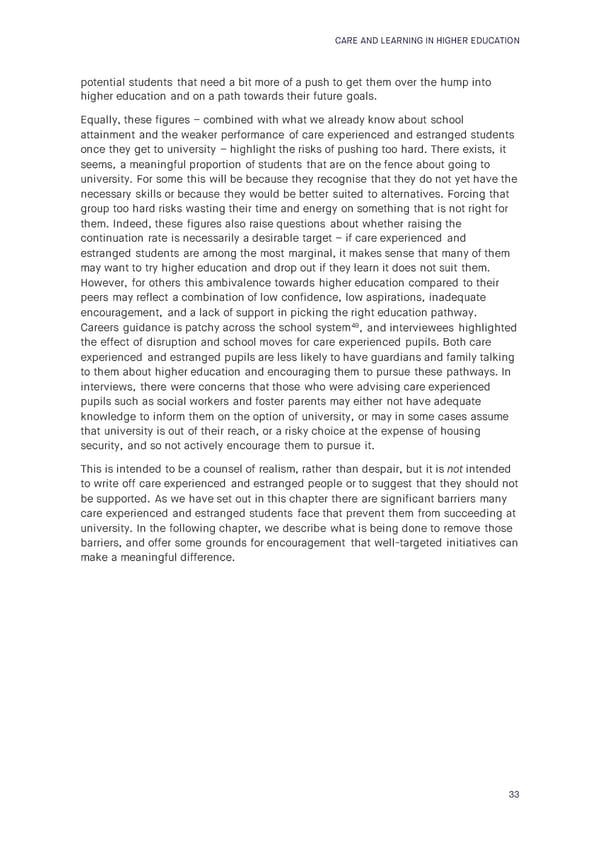CARE AND LEARNING IN HIGHER EDUCATION potential students that need a bit more of a push to get them over the hump into higher education and on a path towards their future goals. Equally, these figures – combined with what we already know about school attainment and the weaker performance of care experienced and estranged students once they get to university – highlight the risks of pushing too hard. There exists, it seems, a meaningful proportion of students that are on the fence about going to university. For some this will be because they recognise that they do not yet have the necessary skills or because they would be better suited to alternatives. Forcing that group too hard risks wasting their time and energy on something that is not right for them. Indeed, these figures also raise questions about whether raising the continuation rate is necessarily a desirable target – if care experienced and estranged students are among the most marginal, it makes sense that many of them may want to try higher education and drop out if they learn it does not suit them. However, for others this ambivalence towards higher education compared to their peers may reflect a combination of low confidence, low aspirations, inadequate encouragement, and a lack of support in picking the right education pathway. Careers guidance is patchy across the school system49, and interviewees highlighted the effect of disruption and school moves for care experienced pupils. Both care experienced and estranged pupils are less likely to have guardians and family talking to them about higher education and encouraging them to pursue these pathways. In interviews, there were concerns that those who were advising care experienced pupils such as social workers and foster parents may either not have adequate knowledge to inform them on the option of university, or may in some cases assume that university is out of their reach, or a risky choice at the expense of housing security, and so not actively encourage them to pursue it. This is intended to be a counsel of realism, rather than despair, but it is not intended to write off care experienced and estranged people or to suggest that they should not be supported. As we have set out in this chapter there are significant barriers many care experienced and estranged students face that prevent them from succeeding at university. In the following chapter, we describe what is being done to remove those barriers, and offer some grounds for encouragement that well-targeted initiatives can make a meaningful difference. 33
 Care and Learning in Higher Education Page 33 Page 35
Care and Learning in Higher Education Page 33 Page 35